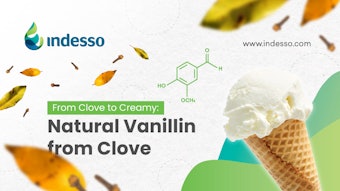Read more presentations and find photos of the event here.
Innovations in taste receptor research promise advances in both ingredient development and health and wellness solutions for flavor houses and food and beverage manufacturers. During his presentation at the 2009 Flavor Symposium, Stephen Gravina (senior research fellow, IFF) provided an overview of the latest science and research possibilities.
Gravina displayed an overview of human taste anatomy, including foliate, fungiform, filiform and circumvallate papillae, and explained the biology of taste perception. The presentation also touched on trigeminal nerves, which are responsible for warming, cooling, pain and touch/position sensations in the mouth. In addition, Gravina discussed sweet, umami and bitter receptors, and the more controversial mechanisms of salt receptors. “One of the primary goals of taste receptor research is to lower the amounts of sugar, MSG and salt in the human diet without compromising taste,” said Gravina. “This has been mandated by our customers and the consumer.”
He added, “The biological mechanisms for sweet and umami have been determined, and high-throughput screening (see below) has led to sucrose and MSG enhancers. These molecules allow up to a 50% reduction in sucrose and MSG. Other targets coming on line are various sweet enhancers, bitter blockers and coolers.” Gravina noted that MSG enhancers are already present in marketed products.
Finding receptor boosters (salt or sweet enhancers, for instance) is a needle-in-a-haystack process. However, a concept begun in the pharmaceutical field—high-throughput screening—offers a more practical approach. Gravina explained that whole libraries of natural and artificial chemicals—representing thousands of materials—can be tested via automated cell-based high-throughput screening processes, which allow for the measurement of biological processes. To illustrate, one machine cited by Gravina runs about 19,200 samples a day.
Changes in activity during these screenings are called hits. These hits are then run through additional tests to eliminate false positives. If a hit passes these tests it is now considered a lead. Leads actually do what one expected—boosting sweetness, for example. From there researchers must examine issues of toxicity, etc.
As mentioned, this largely automated process allows for the processing of thousands of tests in a short period of time, virtually guaranteeing some successes. As Gravina explained, “It’s kind of like going to Atlantic City—if you go there enough you know you’re going to win one day.” In testing 100,000 or 200,000 compounds, researchers are statistically guaranteed at least one material that will perform a desired function.
Gravina noted that the process is part of the industry’s move from “try everything” approaches to those that examine cases that have worked before (leads). The main advantage of this process is that, unlike the pharmaceutical industry, the flavor industry can bring new enhancers to market in a relatively easy and cost-effective manner.










